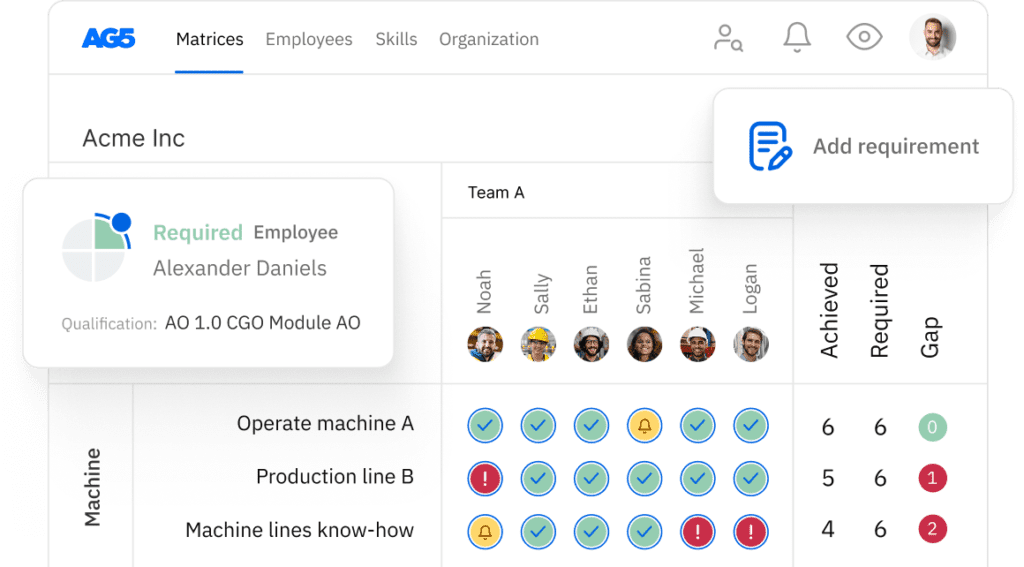How AI can help you standardize & optimize skills data across global sites
Struggling with messy or inconsistent skills data across your global sites? Discover how AG5 uses AI to help teams clean, standardize, and optimize skills data at scale so you can get compliant faster and scale smarter.
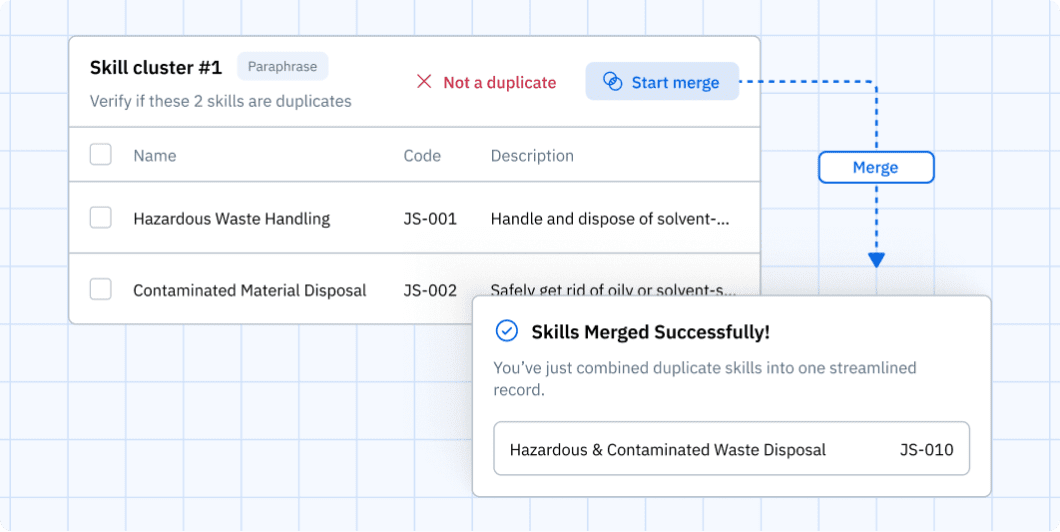
AG5 helps organizations manage and visualize workforce skills, particularly in complex, regulated environments like manufacturing, aviation, and healthcare. With the latest advancements in artificial intelligence, organizations can now analyze and improve their skills data faster than ever.
At global manufacturing companies, we often see that many organizations struggle with inconsistent skill data (skill taxonomies) across different regions or departments, making it difficult to manage skills consistently.
This matters because effective skills management is essential for regulated compliance, ensuring business continuity and driving continuous improvement across sites.
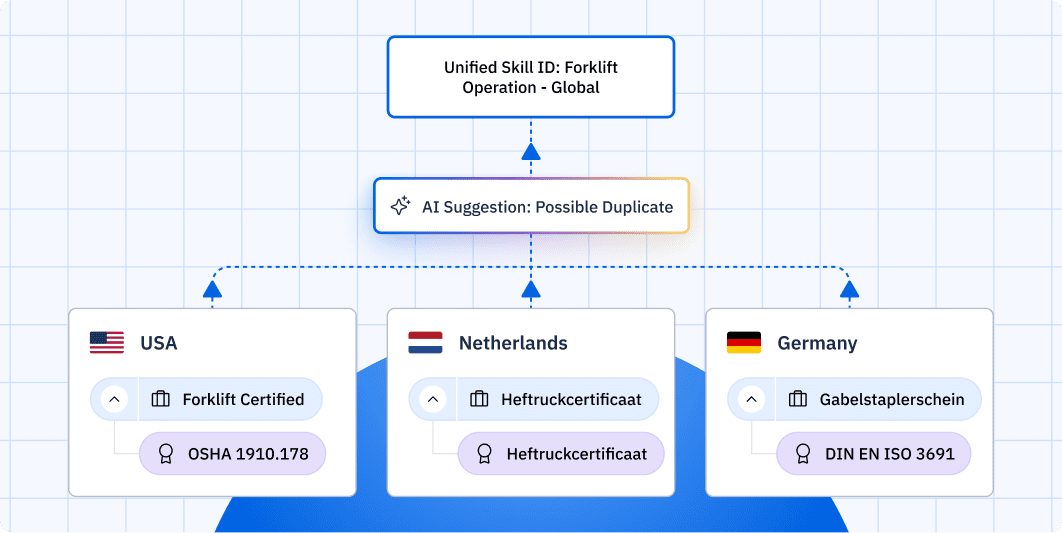
“For our clients, it’s not uncommon to manage over 1,000 –sometimes even over 10,000 –skill definitions across multiple locations and departments.”
AI can suggest data quality improvements in seconds. With the right workflows in place, humans can validate these suggestions in minutes. Improving skill data quality used to be a slow, manual process –often taking weeks. With AI, that same work now happens in days, accelerating onboarding and making skills management far more scalable
“Most onboarding projects start with messy skill data. It’s the norm, not the exception. What used to take weeks to clean up during onboarding, we can now do in days with AI.”
This article explores how AG5 currently applies AI in a successful skills management application, and why we begin with targeted use cases that support smoother rollout and adoption, especially in globally operating organizations.
We’ll start by outlining our guiding principles for applying AI responsibly, and conclude with a look at how these capabilities could evolve in the near future.
AI in skills data: What works well nowCopied
Among the many types of AI available today, AG5 focuses on Large Language Models (LLMs) because of their strength in understanding and generating natural language. LLMs are particularly effective in skills management tasks that require deep language understanding. They can quickly suggest improvements by identifying duplicate skills, rephrasing descriptions, or translating skill data into different languages, while preserving meaning when context is clear. We’ll explore these use cases in more detail below:
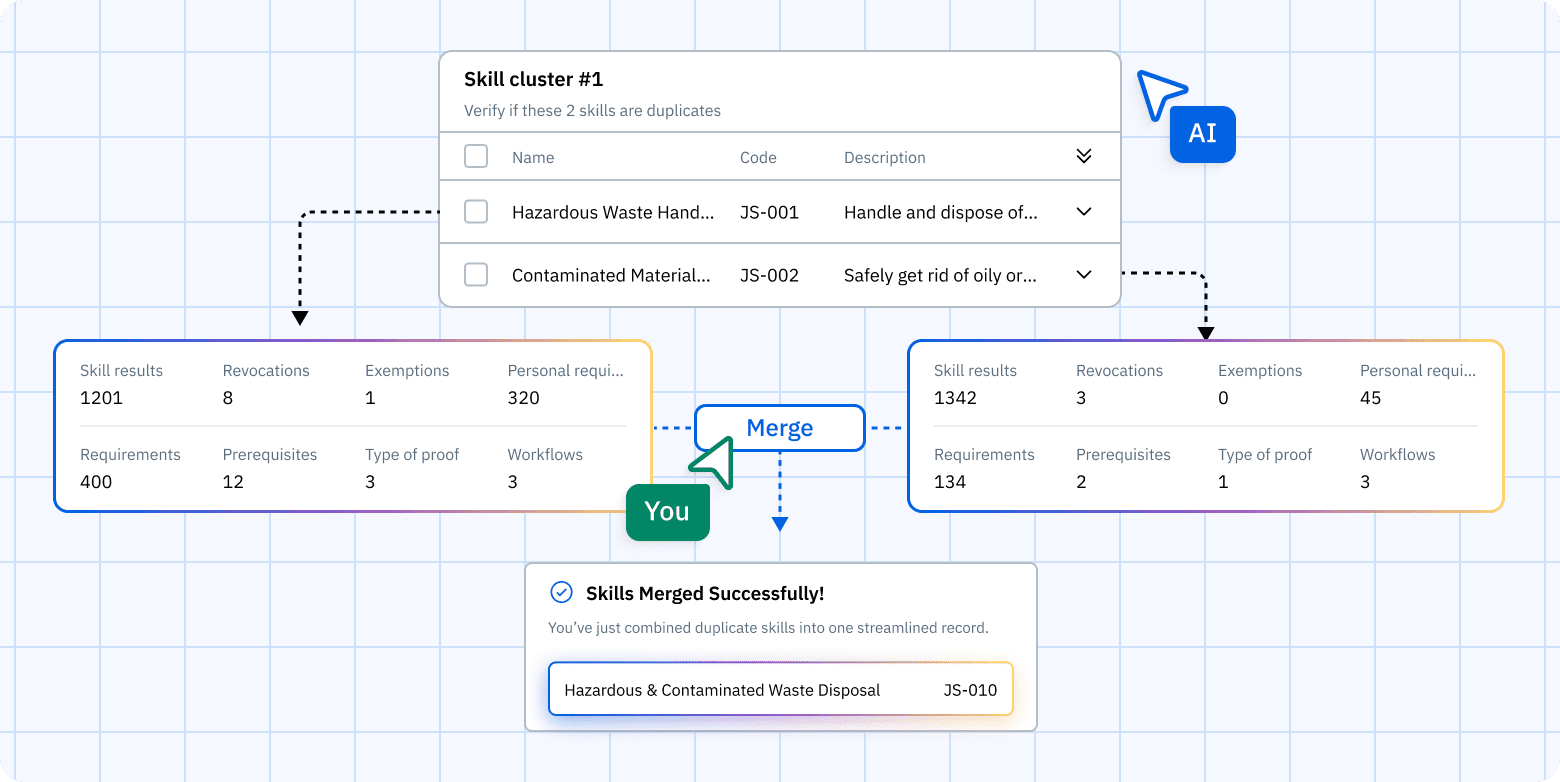
AI capability #1: Duplicate skill detection
AI models can semantically compare these of skill definitions to detect likely duplicates. For example:
- “Inspect welding seams” vs “Check welds”
- “Can drive a truck” vs “RBW CE” (where RBW CE refers to a truck driving license in certain regions)
At the same time, AI can also distinguish between skills that look similar but are clearly not duplicates. For instance:
- “Machine 8080 Operation (WI)” vs “Machine 8081 Operation” (where 8080 and 8081 are distinct machines and thus not duplicates)
This contrast – catching hard-to-spot duplicates and avoiding false ones –is where AI truly shines. It’s a level of semantic nuance that’s hard to match with rule-based systems or manual review alone.
AI efficiently flags potential duplicates, but human validation remains essential, both to catch subtle matches and to avoid false positives only domain experts can judge.
“When you’re managing skills at the scale our clients do, even a small percentage of duplication, just 2 to 3 percent, can lead to dozens of redundant or overlapping skill definitions. That’s not just noise in your system; it’s confusion on your factory floor, in your dashboards, and across your teams”.
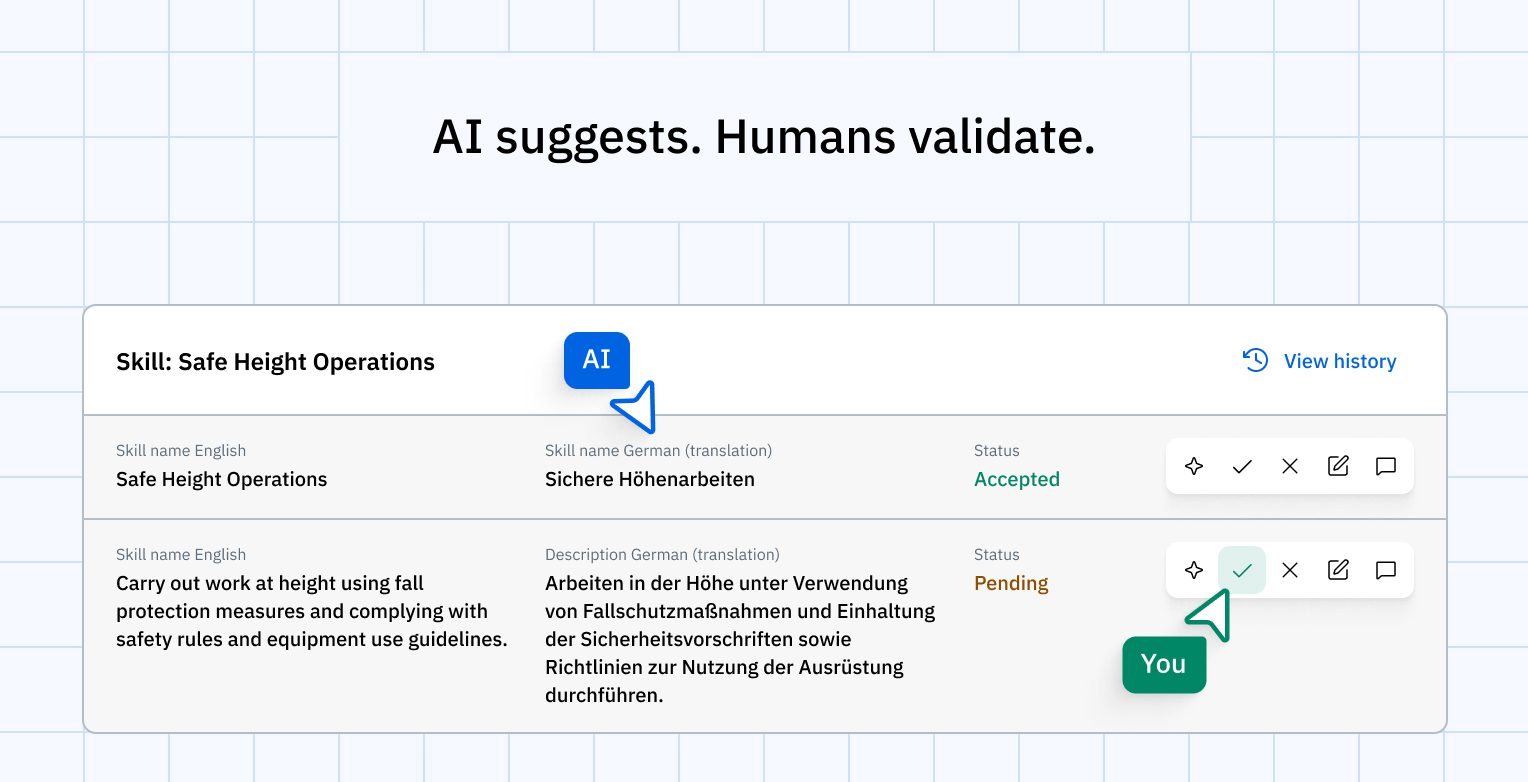
AI capability #2: Translation and rephrasing of skills
LLMs excel at translating or rephrasing skill names, descriptions, and checklists into other languages or simpler terms. But context matters:
- “Lockout/Tagout” must retain its precise meaning in safety protocols
- A skill name like “Press Brake” should not be translated when categorized under “Factory floor machinery,” because in this context “Press Brake” refers to a specific type of industrial equipment, not a general action or instruction
Here again, AI can be a big help when instructed correctly and paired with an efficient human validation process. Our workflow for validating translations closely mirrors the one used for duplicate detection. Review cards provide all the necessary context to make fast, accurate decisions and ensure the right follow-up action is taken.
The AG5 approach: Human-AI collaborationCopied
In high-stakes environments, like a factory running 24/7, trust is absolutely critical, and transparency is the key to earning it. The more complex the skills-related data output, the more important it is for humans to:
- Understand by whom and how it was generated
- Verify that it matches operational reality
That’s why trust through verifiability is one a key consideration in how we apply AI at AG5.
At the current state of AI capabilities, we begin with three foundational principles:
- Only non-personal data is exposed to AI models. For now, we only expose non-personal data to AI, such as skill names, descriptions, categories, job definitions and organizational structures –never GDPR-sensitive or personally identifiable information.This approach could evolve further, but always with privacy as a top priority, and only with explicit permission from our clients.
- AI should suggest, humans should validate. It’s about working together. AI suggests,then humans accept, reject, or refine the AI suggestion
A clear and efficient UI is key to human validation. Reviewers need the right context at a glance to make quick, confident decisions
ConclusionCopied
When skill definitions are created across different plants, regions, or business units, data inconsistencies are inevitable. The challenge is catching those inconsistencies before they affect reporting, compliance, or workforce planning.
With the help of AI, teams can clean up skills data, align terminology, and build a shared understanding, without having to wait for top-down standardization. As a result, organizations are able to onboard much faster and scale skills management efforts across locations.
With an efficient workflow to validate AI suggestions, AG5 keeps humans in the loop, ensuring AI remains a helpful, transparent tool, not a black box. In the future, AI could support even more use cases: better training alignment, career path suggestions, and improved strategic workforce planning.
And it is not only AI that can help further standardize skills data. AG5 already offers master data management and sophisticated access rights to manage data across global and local repositories. These features will also be further enhanced in the future to better support scalable and consistent skills management.
Author Copied
Revisions Copied
Written by: Mathieu
Copy edited by: Adam Kohut

